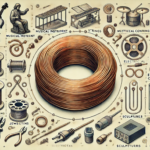In industrial applications where durability against the ravages of temperature is paramount, the materials chosen must stand the test of both heat and time. One such material, whose resistance to oxidation is often questioned, is Nichrome 80 ribbon wire. “Is Ribbon Wire Nichrome 80 Resistant To Oxidation?”.
Industry relying on the longevity of their components in high-temperature environments is concerned about this question.
Nichrome 80 is widely used in a wide range of industries, from aerospace engineering to domestic appliances. With a broader surface area, its ribbon form offers unique advantages and challenges, particularly in terms of oxidation resistance, a vital factor that determines the wire’s lifespan and reliability.
Let’s get into it…
What is Nichrome 80 Ribbon Wire?
Nickel-chromium 80 ribbon wire is primarily composed of nickel (approximately 80%) and chromium (20%), with trace amounts of iron, silicon, and manganese. As opposed to traditional wires, which have a cylindrical shape, ribbons have a flat, thin profile. As a result of this form factor, heat is transferred more rapidly and the temperature is distributed more uniformly across the surface, which is beneficial in applications requiring precise temperature control.
In high-temperature applications, Nichrome 80 maintains structural integrity and resists electrical oxidation better than many metals due to its composition. In electric heating elements, kiln furnaces, and even in glass blowing, it can withstand temperatures up to around 1200°C (2192°F). Due to its flat, wide shape, ribbon wires are ideal for applications where a larger contact surface is required for effective heating.
Oxidation Resistance in Wires
Oxidation resistance in metals and alloys refers to a material’s ability to withstand the chemical reaction with oxygen, especially at high temperatures, without corroding. As oxidation can lead to a loss of electrical conductivity and mechanical failure for wires used in high-temperature settings, this resistance is crucial.
Oxidation resistance ensures that high-temperature wires like Nichrome 80 can withstand prolonged exposure to high temperatures without degrading significantly. The wire is protected from further corrosion by forming a protective oxide layer. As a result of its stability and ability to maintain its properties over a wide range of temperatures, Nichrome 80 ribbon wire is a reliable choice where oxidative conditions are present. Due to its increased surface area, the ribbon may also have a more immediate and controlled reaction with oxygen, which may contribute to the wire’s durability and performance.
The Oxidation Process of Nichrome 80
Oxidation, a reaction between oxygen and a material, is often accelerated at high temperatures. In Nichrome 80, an alloy prized for its thermal stability, the oxidation process begins when a thin layer of chromium oxide is formed. This layer is key to the alloy’s impressive oxidation resistance. A strong bond between chromium and oxygen in the alloy ensures the integrity of this layer, effectively shielding the nickel-chromium matrix from further oxygen contact.
Approximately 80% nickel and 20% chromium make up Nichrome 80, which is precisely calibrated for high-temperature environments. The alloy’s structural strength and ductility come from nickel, while corrosion and oxidation resistance come from chromium. In high temperatures, chromium reacts with oxygen to form chromium oxide, which adheres to wire surfaces. Oxygen cannot easily penetrate this layer, preventing the underlying metal from further oxidising.
Comparing Oxidation Resistance: Nichrome 80 vs. Other Alloys
Nichrome 80’s resistance to oxidation is outstanding, but how does it stack up against other high-temperature alloys? Kanthal, for example, composed of iron, chromium, and aluminum, can withstand higher temperatures before beginning to oxidise, due to the formation of a protective alumina layer. However, Nichrome 80 often has a better oxidation resistance at temperatures where both alloys are stable because of its higher chromium content.
The ribbon form factor of Nichrome 80 presents a larger surface area to volume ratio compared to round wires. This means that the protective chromium oxide layer is spread over a greater area, which can lead to a more rapid initial oxidation but also a quick stabilisation period, after which the oxidation process significantly slows down. This contrasts with round wires, where the oxidation may occur more gradually but can penetrate deeper before the wire stabilises, due to the lesser surface area exposed.
The flat surface of ribbon wire also ensures more even heat distribution, which can prevent hotspots that contribute to localised oxidation in round wires. This uniformity is crucial in applications like heating elements where consistent performance is essential. The overall effect is that Nichrome 80 ribbon wire, when compared to other forms and alloys, provides a reliable balance of high-temperature performance and oxidation resistance, making it suitable for a wide range of industrial applications.
Industrial Applications and Oxidation Challenges
The robust thermal properties of Nichrome 80 ribbon wire make it a mainstay in numerous industrial settings. Electrical heating elements are commonly used in industrial furnaces, household appliances, and ceramics and glass production where consistent heat application is critical. A high-temperature wire is also used in the aerospace industry for internal aircraft systems.
Nichrome 80 ribbon wire faces oxidation challenges, especially in environments with fluctuating temperatures and corrosive gases. Chemical processing plants or equipment near combustion processes require wires to maintain integrity despite the oxidative potential of their surroundings. In these operational environments, Nichrome 80’s oxidation resistance is tested and high-quality wire is required to ensure safety and reliability.
Enhancing Oxidation Resistance
Industries employing Nichrome 80 ribbon wire have developed several strategies to enhance its oxidation resistance. One approach is to apply specialised coatings that provide an additional barrier to oxidation. Ceramic and glass coatings, for example, can be used to encapsulate the wire, protecting it from direct exposure to oxygen at high temperatures.
Another strategy is to engineer the operational environment to minimise the wire’s exposure to oxidising conditions. This could involve implementing controlled atmospheres or using protective gases in processes where the wire is heated. Furthermore, improvements in alloying techniques have allowed for the development of Nichrome 80 variants with additives that improve oxidation resistance without compromising the wire’s fundamental properties.
Maintenance and Care for Longevity
In high-temperature applications, Nichrome 80 ribbon wire longevity is greatly influenced by maintenance and care. Detecting early signs of oxidation, such as discoloration or scaling on the wire’s surface, can help identify a compromised oxide layer. It is also important to keep the wire clean and free of contaminants that could catalyze oxidation.
In applications with cyclic temperature variations, allowing the wire to cool slowly can prevent thermal shock, which can damage the protective oxide layer. The wire’s oxidation resistance can also be preserved by storing it in a dry, temperature-controlled environment when not in use.
The oxidation resistance of Nichrome 80 ribbon wire explains its widespread industrial use. Despite challenges, the wire’s inherent properties and enhancement techniques ensure its reliable performance in high-temperature applications. For a project to succeed, it is crucial to recognize the importance of material selection.
Reach out to The Crazy Wire Company for detailed information on Nichrome 80 ribbon wire and to ensure you select a wire that meets your high-temperature needs. Depending on your specific needs, our experts can provide you with specifications, advice, and a range of options. Make a confident purchase decision by exploring our offerings on our website today.
We offer also a massive range of stainless steel wire and nichrome wire through our store. Choose the wire that you want to work with and we’ll get spooling.
If you’re interested in learning more about wire, check out our other blog on Everything You Need to Know About Wires.
We are also proud to supply this product on our highly popular eBay store, check us out there too.
Thank you for checking out our site.
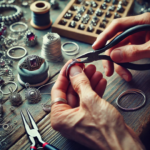
DIY Silver Wire for Jewelry Making: Easy Projects to Try at Home
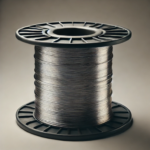
Exploring the Versatility of Sterling Silver Wire
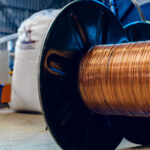
How Tinned Copper Wire Enhances Electrical Conductivity
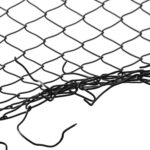
Creative DIY Projects Using Black Wire: Inspiration and Ideas

Unlocking the Secrets of Lockwire: A Comprehensive Overview
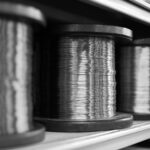
Fine Wire Applications in Modern Technology

The Ultimate Guide to Getting Started with Model Wire
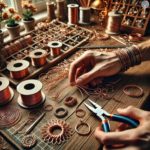
DIY Copper Wire Crafts: Easy Projects for Kids and Adults
